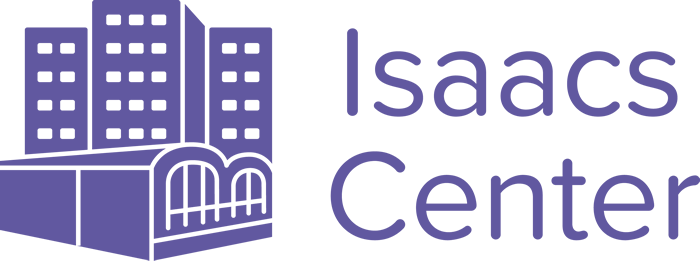A New Place for Paintings
Local non-profits give art a permanent home at the Stanley Isaacs Center
Yorkville Some of New York City’s most famed cultural institutions call the Upper East Side home, with the Metropolitan Museum of Art, the Guggenheim Museum and the National Academy peppering Museum Mile along Fifth Avenue. The Frick Collection, the Whitney Museum and a slew of prestigious art galleries populate the uptown blocks as well.
But for many residents, access isn’t synonymous with proximity.
The Stanley M. Isaacs Neighborhood Center, a social services and community organization with a base at the New York City Housing Authority’s Holmes Towers and Isaacs Houses on First Avenue and 93rd Street, is working to make New York’s cultural landscape more accessible to some of the city’s youngest residents. The Isaacs Center has partnered with Art Connects New York, an organization that brings artwork to social service agencies, to place a permanent installation in its youth center. The exhibition, “Animalis,” focuses on nature and the environment and introduces the work of 18 contemporary artists to the center.
The exhibition opened on Thursday, May 15, and was curated by Kirsten Flaherty, a Queens-based printmaker who pulled together friends and colleagues to donate pieces to the exhibition.
“I really wanted to show the kids, just kind of expose them to all the different kinds of mediums of printmaking,” said Flaherty, who studied at the School of Visual Arts. “When I was growing up, I didn’t even hear about printmaking until college, and then I just kind of fell in love with it. So I thought it would be a great thing to show the kids it’s an option.”
Of the 70 elementary school children the Isaacs Center serves in its after-school program, around 60 live in the surrounding Holmes Towers and Isaacs Houses, many of whom attend the Yorkville Community School six blocks south.
“When we have young people who go to school a few blocks away and come to our after-school program, that can be a very narrow slice of the world,” said Greg Morris, president and executive director of the Isaacs Center. “We’re bringing the culture here and that then inspires us to open up our doors and keep encouraging our young people to see the world as a much larger space.”
The center, located on the first floor of a NYCHA residence, wasn’t especially inviting, Morris said, and in preparation for the installation, Isaacs Center staff gave the center fresh coats of red, white and blue paint, and brought in plants and comfortable furniture to warm up the environment. The youth center includes classrooms and a small library, and the artwork lines the red-walled hallway. The print-heavy installation includes many black-and-white pieces, including Flaherty’s “Footprint II,” an etching of a pensive, curious monkey.
As part of the partnership, Flaherty and her fellow artists will return to the center this summer for silkscreen workshops. Nadine Butterfield, an artist involved in the exhibition, works with children at New York-Presbyterian Hospital and recognizes the essential benefits of bringing art to young people.
“They don’t quite yet have the vocabulary for things, and art comes from a wordless place,” Butterfield said at the show’s opening. “For myself growing up it was a therapy for me. It opens our eyes to a different world, just like books do.”
The Isaacs Center also operates a senior program, provides youth employment and job training and delivers food through Meals on Wheels. Though open to any resident in the five boroughs, many of those served at the Isaacs Center live in NYCHA housing or are underemployed, and the center embraces the immediate community in the adjacent housing developments.
While New York is a fine art and cultural mecca, more than 25 percent of the city’s public middle and high schools do not employ a full-time certified art teacher.
“Our job is to equalize opportunities for children and families who are working poor, who are struggling, who are trying very hard to make ends meet,” said Morris. “A family might not have the opportunity or time or resources to visit museums and get exposed to all this different culture. If the family can’t do it, and if the school can’t do it, we have to provide that space for the children we serve.”

